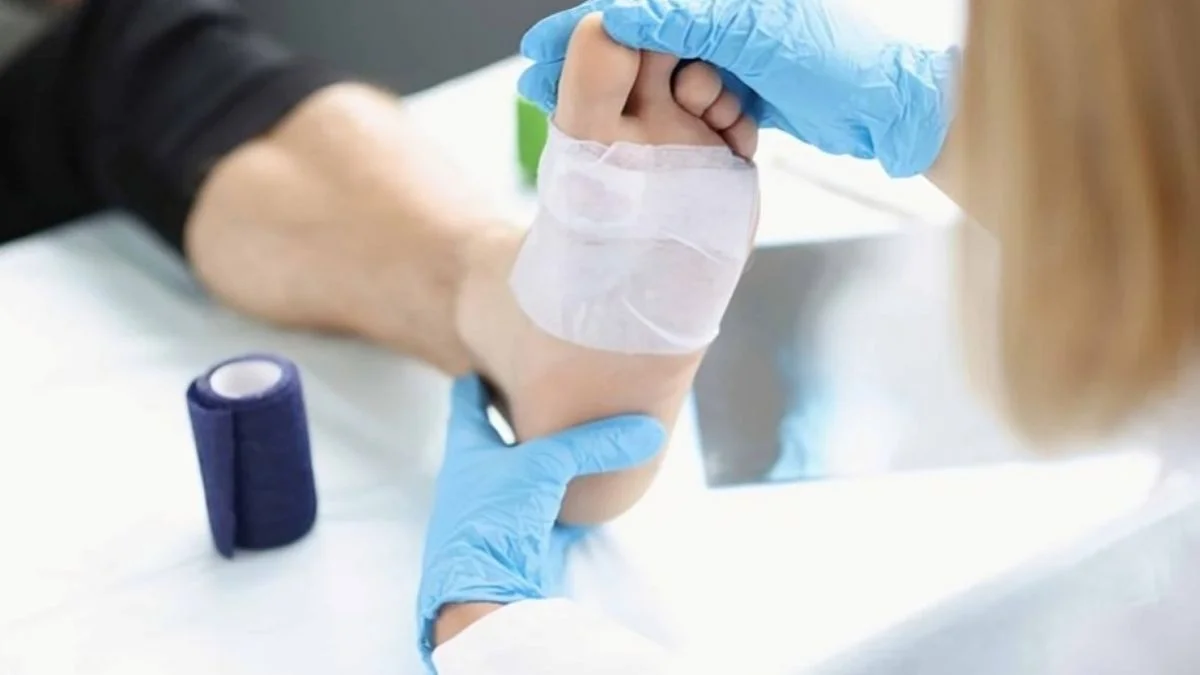HEALTH AND FITNESS
How Specialists Determine the Severity of a Chronic Foot Wound?

Chronic foot wounds are complex medical problems, especially for individuals dealing with diabetes, neuropathy, vascular disease, or long-standing pressure injuries. When patients visit a wound care clinic in St Petersburg for a lingering sore or ulcer, one of the first steps specialists take is determining how severe the wound truly is. This detailed assessment guides every decision that follows, from choosing the right treatment plan to predicting healing time and preventing more serious complications. Understanding how clinicians evaluate a chronic foot wound helps patients recognize the importance of early care and why precise diagnosis matters. The process is far more involved than a simple visual check. It combines clinical measurements, lab tests, imaging, and a close look at how local factors in St. Petersburg’s climate and lifestyle may contribute to slow healing.
Table of Contents
Why Severity Assessment Matters?
Foot wounds often look mild at first, but underlying issues can make them far more dangerous than they appear. Specialists in St. Petersburg frequently see patients who walked on a wound for days without realizing it because of neuropathy, or whose sore worsened because poor circulation limited oxygen delivery to the area.
Determining severity allows clinicians to:
- Identify whether infection is present
- Evaluate tissue damage beneath the surface
- Determine if bone is involved
- Understand circulation quality around the wound
- Recommend precise treatments rather than guesswork
Without knowing severity, even the best wound care techniques may fail.
Step One: A Comprehensive Visual and Physical Exam
A specialist begins by examining the wound’s size, depth, color, and drainage. These visual clues can quickly reveal whether healing is on track or stalled.
For example:
- A shallow, pink wound may indicate early healing.
- A deeper ulcer with black or yellow tissue suggests dead or dying skin that needs removal.
- Heavy drainage or foul odor may signal infection.
In a real case seen commonly in coastal cities like St. Petersburg, a patient with diabetes may arrive with what appears to be a small blister on the bottom of the foot. On closer inspection, the blister may actually be the surface of a deep, tunneling ulcer hidden beneath thick callus. This initial hands-on assessment helps specialists determine if the situation is urgent.
Step Two: Measuring Depth and Tissue Layers
Depth is one of the most important markers of severity. Clinicians gently probe the wound to identify which tissue layers are involved. If the probe touches bone, the patient may have a condition called osteomyelitis, which requires immediate attention.
Wounds are usually categorized into levels such as:
- Surface wounds affecting only skin
- Partial-thickness wounds involving deeper layers
- Full-thickness wounds extending into muscle, tendon, or bone
These measurements are reassessed at each visit to track improvement.
Step Three: Testing Circulation and Blood Flow
Poor circulation is one of the leading contributors to chronic non-healing wounds. St. Petersburg specialists routinely check blood flow using tools like:
- Ankle-Brachial Index testing
- Doppler ultrasound
- Skin perfusion pressure measurements
These tests show whether enough oxygenated blood reaches the area. If circulation is limited, even the best topical treatment will not work. In some cases, vascular surgery or minimally invasive procedures are recommended before wound care can progress.
A practical example: a patient from the Gulfport or Treasure Island area might frequently wear closed shoes in warm weather, causing friction that leads to a minor wound. If that patient also has peripheral artery disease, the wound may grow deeper rather than close.
Step Four: Evaluating for Infection
Infection is a major reason chronic foot wounds become dangerous. Specialists assess for redness, swelling, warmth, drainage, and odor, but also perform lab tests when needed.
Common diagnostics include:
- Wound cultures to identify bacteria
- Blood tests to detect systemic infection
- Imaging to check if infection has reached the bone
Treating infection early can prevent hospital stays and long-term complications.
Step Five: Imaging to Reveal Hidden Damage
X-rays, MRIs, and ultrasounds often reveal what the eye cannot see. These tests help clinicians understand whether a wound tracks under the skin, how far it extends, and whether bone or tendons are exposed.
For instance, foot wounds that appear small on the surface can actually travel along soft tissue planes. Imaging ensures nothing is missed.
Step Six: Assessing Pressure, Gait, and Footwear
Local lifestyle factors in St. Petersburg play a role in chronic foot wounds. Sandals, beach walking, and moisture can all affect healing. Specialists evaluate whether pressure points, improper footwear, or gait abnormalities are contributing to the wound.
If a patient unknowingly places too much pressure on a healing ulcer, even walking around the home may worsen it. Offloading devices, custom orthotics, or mobility adjustments may be recommended.
Step Seven: Reviewing Medical and Lifestyle Factors
Severity isn’t determined by the wound alone. Chronic conditions, medications, nutrition, and activity levels all influence healing.
Clinicians consider:
- Diabetes control
- Smoking
- Immune system function
- Activity level
- Skin condition
- Age
This holistic review helps create a tailored plan for each patient.
When to Seek Help in St. Petersburg?
Anyone noticing a wound that has not improved within one to two weeks should seek help from a specialist. Early evaluation prevents complications, reduces healing time, and lowers the risk of infection. Chronic wounds rarely heal on their own.
Final Thoughts
The process of determining wound severity is detailed and methodical because it sets the foundation for effective treatment. Whether someone is dealing with a diabetic foot ulcer, a pressure injury, or a wound caused by friction or footwear, identifying severity early significantly improves outcomes.
Check moleskin foot padding for readers interested in supportive items that may help keep pressure off vulnerable areas.
-

 GENERAL5 months ago
GENERAL5 months agoChristofle – For Those Who Dream of Family Heirloom Silver
-

 SPORTS7 months ago
SPORTS7 months agoDiscover the World of Football with Streameast: Watch Your Favorite Leagues and Tournaments
-

 GENERAL3 months ago
GENERAL3 months agoUncovering the World of кинокрадко: The Dark Side of Film Piracy
-

 GENERAL1 month ago
GENERAL1 month agoATFBooru: Anime, Gaming, and Subculture Imageboard























